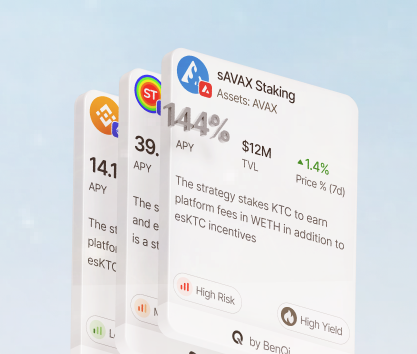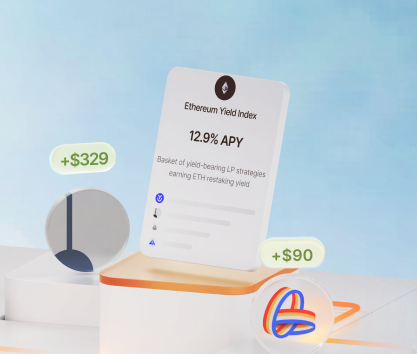The Decentralized Finance ecosystem is incredibly diverse and appears overwhelmingly complicated to an unprepared eye. Even experienced veterans often cannot distinguish projects that deserve your attention from the chaff. Building a balanced portfolio capable of performing under all sorts of market circumstances is a tough task for any investor, but it becomes an impossible one for many DeFi enthusiasts.
Understanding how to read DeFi market metrics and use the data to your advantage is a skill that requires honing and consistent training. The problem here is that it is not even close to lifting weights. You cannot simply increase the volume of information that undergoes analysis. Instead, you must expand your horizons with advanced tools, unique analytical approaches, and sources of data.
We are going to talk about some important growth drivers in decentralized finance, various metrics that you should pay attention to, and analytical approaches useful when investing in crypto. Note that we do not give financial advice. The information in this article should be considered educational. We strongly encourage all our readers to do their own research and focus on improving their personal analytical skills.
Metrics to look for when analyzing DeFi
The decentralized finance sector is already quite mature. Due to its quick development and rapid expansion, it was a chaotic place just a decade ago. Today, investors have access to a wide range of different tools and sources of information. Only the lazy fail to recognize obvious frauds like the recent Mantra or more pronounced Terra Luna. These were technologically inferior projects with suspicious price action movements.
Responsible investors focus on avoiding chains and protocols that do not have solid metrics. Instead, many DeFi enthusiasts prefer working with various stablecoins that seem to make sense and protocols that have distinct utility and use cases. There is a reason why DEXes, Bridges, and Lending platforms have been staples of the DeFi ecosystem for years.
So, how can one identify reliable protocols that can become viable investment targets? Let’s talk about some important metrics and growth drivers.
TVL and DEX volumes
Total value locked is a solid metric that shows the nominal value of all assets locked in pools, protocols, and chains. While it is not perfect, it is a very transparent metric due to the way data is collected by protocols and aggregators. The information is gathered directly from the chain, allowing investors to see investment activity, cash flows, and other important metrics.
Decentralized exchanges (DEXes) still form the backbone of the whole ecosystem, generating millions in revenues and providing valuable financial services to the users of the sector. The combined TVL of all DEXes is close to $17.5 billion as of the time of writing. According to various DeFi aggregators, these protocols generate over $2.5 million in revenues daily and process close to $7 billion in volume.
Here are some other important metrics that you should keep an eye on:
- User activity. These numbers are rarely disclosed by protocols themselves, but can be deduced using a wide range of tools. For instance, you can use Dune Analytics to assess the number of unique wallet addresses interacting with EVM-based protocols. Some of the most popular protocols out there are Aave, Uniswap, and Curve.
- Cross-chain compatibility. Many protocols can move funds across the DeFi ecosystem. However, their efficiency and security are still limited. Tracking the quality of zk-Rollups and layer-2 solutions for Ethereum, Cardano, and other networks is quite important for DeFi users interested in diversification.
- TVL and volume dynamics. Raw numbers can be informative when trying to evaluate nominal values of protocols in real time. However, changes of price action, trading volume, revenues, total value locked, and other metrics can be even more telling.
These metrics can be used to evaluate all sorts of DeFi protocols when trying to identify the best investment strategies for crypto. However, you should also think about various factors that affect the growth of the sector and its future.
Growth drivers in DeFi
There are many factors that determine the health and direction of the decentralized finance ecosystem. While you don’t have to rely on analyzing speculative suggestions that can be derived from analyzing these factors, it is still important contextual information that can help you make more informed decisions.
Here are some of them:
- Institutional adoption of DeFi. Many DeFi enthusiasts often say that they follow the money and focus on projects that attract attention from large banks and investment funds. It is hard to assess the true scope of institutional involvement in decentralized finance, but some banks and funds make announcements on social media. You can also track whales and how they move funds around.
- Regulatory impact on DeFi. The introduction of better consumer protection, partial deanonymization, and other forms of adding more rules and guidelines to the DeFi ecosystem can be incredibly important for the long-term success of the industry. We are already seeing such changes across the globe. For instance, the SEC is in talks to add Solana to the list of regulated securities, while the EU is moving forward with MICA.
- Expansion into retail and international trade. Cryptocurrencies are already used for cheap international remittances or to bypass various sanctions and restrictions. While some may argue about the ethical side of using assets that can also be used for shady operations, the other side of the coin is that crypto proves to be a vital instrument for upholding individual freedoms. The DeFi vs traditional finance battle is gaining more fuel with the consistent adoption of crypto by retailers, stores, and international businessmen.
The popularity of time-tested projects. Many critics of the DeFi sector often mention the low rate of adoption of DeFi tools in general while ignoring the massive popularity and volumes generated by leading platforms. For instance, the category of Lending protocols tracked by aggregators has over 500 different entries with a combined TVL of over $39 billion. Top 5 protocols (Aave, Justlend, Morpho, Compound, and SparkLend) are responsible for 72% of that number.
Many top DeFi protocols of 2024 are still leading the pack a year later. While it is true that the DeFi ecosystem is incredibly dangerous for inexperienced newcomers who are often attracted by obnoxious promises made by shady projects, time-tested platforms are doing what they have been doing for years — providing a valuable financial service to millions of forward-thinking users.
The future of blockchain ecosystems
In 2025, many protocols will be tested by the market, and the fallout of aggressive geopolitics will define the chaotic environment of the global economy. However, it is also a great opportunity to make some of the best investments of your life. One must be very careful and cautious while selecting the right cryptocurrencies, pools, and chains to invest in!
If you find yourself struggling to make the right choice, you should visit the Rivo Yield Marketplace, which features a variety of investment strategies. A team of experts selects and verifies some of the most-promising investment strategies in the DeFi ecosystem. Users can choose from a wide range of different pools and select options that suit their investment horizons, risk styles, and more.









